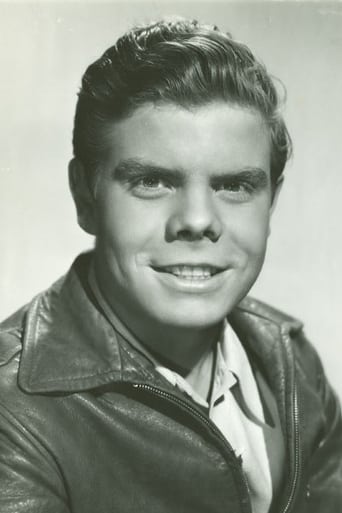VividSimon
Simply Perfect
Teringer
An Exercise In Nonsense
Rosie Searle
It's the kind of movie you'll want to see a second time with someone who hasn't seen it yet, to remember what it was like to watch it for the first time.
Scarlet
The film never slows down or bores, plunging from one harrowing sequence to the next.
Vimacone
Tex Avery arrived at Schlesinger's in 1935 after working a few years as an animatir at the Lantz studio. Although no studio records exist anymore, Tex evidently made a strong impression on the studio very early on as he started directing the prestigious Technicolor Merrie Melodies almost immediately. He was the 2nd director to be given this status. MISS GLORY was the first Merrie Melody he directed.While the formula of having to plug a song compromised Tex's objective for comedy, this short has been celebrated for its art deco backgrounds and character designs. It's almost like The New Yorker magazine in movement. It's really a one of a kind film for Tex, although this was very much in vogue for the 30s. I wonder what the full story is for the collaboration with the credted art director.Reportedly Tex didn't care for this short, like most of his earlier efforts, which is really a shame, because this the most outstanding WB cartoons for early 1936; When most of the ouput was still in a mediocre stage. A short like this would have been more appreciated by Freleng and no doubt Tashlin, who utilized the art deco style to the fullest extent. But Avery pulled the style off very well. Aling with I LOVE TO SINGA, this short is an early Avery masterpiece.
Edgar Allan Pooh
. . . you'll wake up dead, but apparently it doesn't work that way in the Cartoon Universe. When Busby Berkeley has the live-action chick go over the high-rise balcony during "Broadway Melody," movie goers figure that she's kicked the bucket on pretty much every level. But when PAGE MISS GLORY's dozing bellboy floats down to the sidewalk like some specter of 9-11, strains of "Broadway Melody" trailing after him in the background, a streetcar stops just short of slicing him in half, so that the screaming hotel desk clerk can wake him up. However, despite that fact that Warner Bros. animators have drawn in many religious symbols and parables here, some of which could be taken as Islamic, I do not think that this is either Warner's most overt warning of an approaching September 11, or that that sad event is the primary focus of this cartoon. While it's true that more people died trapped inside elevators then than on any other date in recorded history, and PAGE MISS GLORY's hapless Bellboy becomes a Plinko Game Chip in elevators running amok, this is probably just a coincidence, or maybe a Real Bad Dream.
TheLittleSongbird
Tex Avery was an animation genius, and while I consider Page Miss Glory one of his better cartoons it's not always mentioned amongst his other work. That's understandable though because there is so much from him and many masterpieces. The animation for want of a word is gorgeous, the characters are very well drawn and in Avery's distinctive style and the colouring is softly-shaded and colourful. The music is catchy and energy, right from the background music to the musical numbers. The choreography positively dazzles and never looks awkward in the animation. The gags are similarly great, there's plenty to be seen, and they are done in a fresh and imaginative way that ties in with the musical numbers too. Page Miss Glory's story is simply constructed, but made fun by the snappy pacing, gags and music, while the characters are sweet and the voice work and singing top-notch. In conclusion, glorious cartoon from Tex Avery. 10/10 Bethany Cox
Lee Eisenberg
The overblown musicals of the 1930s easily set themselves up to get parodied (in my opinion, it was outright inappropriate of Hollywood to make these sorts of movies given that the country was in the midst of the Great Depression). One spoof was Tex Avery's "Page Miss Glory", which has also been known simply as "Miss Glory" to avoid confusion with a movie by the same name. It portrays a bellhop in a hotel in Hicksville awaiting the arrival of a glamorous movie star. When she doesn't come, he dreams that he's a bellhop in an Art Deco hotel probably spoofing the average Fred Astaire flick. But boy does he have a surprise coming at the end! I've always liked how the Looney Tunes/Merrie Melodies cartoons poked fun at the popular culture of their eras. Granted, this is one of the rarer ones (I watched it on YouTube). Apparently, some of the characters are caricatures of the Warner Bros. animation staff (among them Chuck Jones). Either way, it's a pretty interesting relic of their early days.

